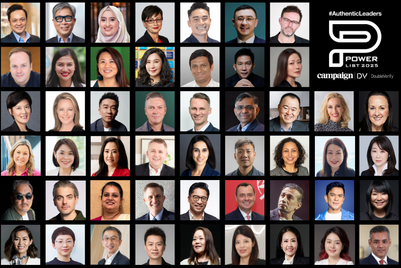At the recent Campaign Spotlight Hong Kong 2025, a quick poll among marketers in the audience told a powerful story: AI is no longer a ‘what if’, it’s a ‘what now’. Over 70% of marketers said they have leveraged AI in some capacity for their marketing campaigns, 57% admitted to turning to ChatGPT five times a day, and a further 23% went so far to say that their usage was ‘uncountable’.
However, AI as a tool is still chaotic, messy and rapidly evolving, and literally everybody (even those developing it) are learning on the job and from each other. At the event, the panel discussion titled ‘Drawing the Line with Gen AI’, featured three AI brand practitioners: Elaine Tai, regional marketing head for Asia Pacific at Geox Asia Pacific, Roger Li, senior director of Yahoo Creative at Yahoo APAC, and Agnes Lung, group executive director and chief marketing and digital officer at UNI China.
During the lively panel session, the trio explored the excitement, chaos, and creative challenges AI presents—from production pressures to the pitfalls of over-automation.
Lung recalled UNI China’s Storage 24 branding campaign, which was a hyper-local and performance-driven campaign featuring local celebrity Kenneth Ma in 19 different creative versions, covering all the districts that the storage brand operates in. What seemed a routine approach if done the traditional way came with its own AI wrinkle.
“We gave prompts to the AI to put Kenneth in 19 creative [assets] with customised context of that particular district, but we found that it didn’t quite understand. There was no storytelling, so we had to redo the prompts one by one and tell the tool exactly what we want,” said Lung. She jokingly added AI has no sense of humour, citing the example that AI would never think of putting lychee into the creative for Lai Chi Kok (‘lai chi’ is pronounced exactly the same as lychee in Cantonese, the local dialect of Hong Kong).
Tai echoed Lung’s sentiment, adding that managing internal expectations, particularly from leadership, is now a critical part of a marketer’s role. While AI is a powerful tool and enhances efficiency, the pressure is now on marketers to deliver more with a smaller budget and less time. This means the onus is on marketers to figure out how much the tool can and cannot deliver while simultaneously managing internal stakeholders.
“It does mean we have to upgrade ourselves and evolve with the tool—to know what procedures we can give to AI and what we need to do ourselves. The mindset shouldn’t be what can be done by AI, it should be what we can do with AI, and to not fall into the trap of delivering quantity but not quality,” said Tai.
Li switched gears by speaking about a different kind of AI pitfall—authenticity and ethical considerations.
“The first concern many of our clients ask is whether it’s ethical to use AI, and how to deal with the copyright behind all this generated content,” he said. “Then there is the quality, or specifically the authenticity and humanity. Sometimes you don’t want things, like the quality of a model’s skin to be too perfect because that’s just not humanly possible. So you must always bring the human touch back, both aesthetically and strategically.”
Yahoo was recently given an open brief and the free hand to work on a CSR campaign for Bao Dim Sin Seng, a brand under the UNI China Group selling traditional Chinese steam buns. Li’s team at Yahoo Creative tapped into AI to explore a range of campaign ideas to generate over 100 creative variations. The team eventually shortlisted 12 ideas and leveraged Dynamic Creative Optimization (DCO) engine to find the best version for the campaign.
“DCO is not anything new—it’s been in the market for over a decade,” said Li. “What’s different today is how easily we can now generate a large number of variations to feed into the system. To test and learn effectively, we need options—and AI significantly streamlined that process.”
As a result, the campaign didn’t just meet expectations—it exceeded them, driving a 30% increase in CTR and a 120% lift in sales.
Li also referenced a study by Yahoo and Publicis Group which revealed that while 60% of respondents were comfortable with AI-generated backgrounds, only 37% accepted AI-generated main talent or foregrounds. The same study shows the perception gap: while just 37% of the public expressed comfort with AI-generated images, that number jumped to 77% among marketers and advertisers.
As AI continues to blend into the creative process, one big question remains: should audiences be told when content is AI-generated?
Li has a rather definite answer: “In a survey we did last year with A/B testing—one creative had disclosure and the other didn’t—we found that the latter generated higher trust between the audience and the brand.”
This all goes to show that AI is not a plug-and-play solution, but a fast-moving, collaborative tool that demands human judgment, creative direction, and ethical consideration. As this panel proved, those who are asking the hard questions now will be best equipped to lead the industry forward.






+(900+x+600+px)+(3).png&h=334&w=500&q=100&v=20250320&c=1)
+(900+x+600+px).jpg&h=334&w=500&q=100&v=20250320&c=1)

.jpg&h=334&w=500&q=100&v=20250320&c=1)





.jpg&h=334&w=500&q=100&v=20250320&c=1)
.png&h=268&w=401&q=100&v=20250320&c=1)
.jpg&h=268&w=401&q=100&v=20250320&c=1)
.jpg&h=268&w=401&q=100&v=20250320&c=1)




